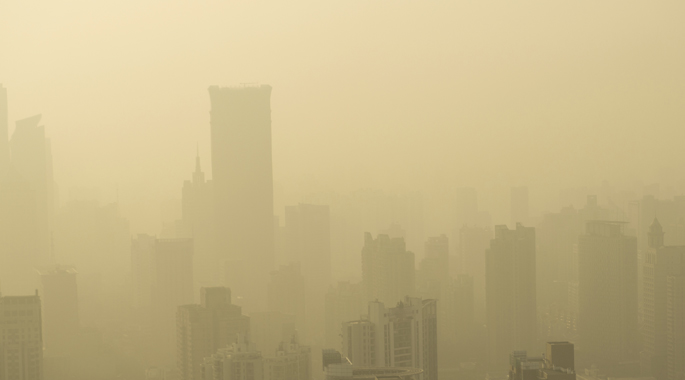VOC regulations and what they mean for manufacturers
Volatile organic compounds, or VOCs, are emitted by everything from aerosol deodorants to household cleaning supplies. But some industries may create them in large enough quantities to constitute a substantial health risk and contribute to ground-level ozone buildup.
According to the EPA, ground-level ozone results from a reaction between oxides of nitrogen and sunlight. It is associated with a host of respiratory issues.
Residents of some large cities, such as Los Angeles or Beijing, are familiar with the buildup of smog over the city skyline. VOCs are a major component of smog. But whereas Los Angeles began to regulate emissions in the 1970s and resulting in a reduction of ground-level ozone levels, Beijing did not enact major air pollution control measures until 2013 and still experiences exceptionally smoggy days.
Inventions like the catalytic converter have been instrumental in cutting pollution, but so too have regulations on the output of VOCs in industrial settings. While VOC regulations may sometimes be a thorn in the side of high-output facilities, they’re nothing compared to the health effects that can result from heavy exposure to ground-level ozone from VOCs.
VOC regulations by state
Coatings manufacturers are limited in the number of VOCs they can include in coatings by the EPA’s Architectural Coating Rule for Volatile Organic Compounds. Enacted in 1998, this subset of the earlier Clean Air Act sets nationwide rules for the manufacture, labeling and packaging of coatings to be used on any stationary structure.
In 2020, the EPA enacted the National Emission Standards for Hazardous Air Pollutants, which establishes emission limits and work practice requirements for new and existing miscellaneous coating manufacturing operations like process vessels, storage tanks, wastewater, transfer operations, equipment leaks, and heat exchange systems. It also implemented the Clean Air Act to require new emission-control techniques under Maximum Achievable Control Technology standards.
Nearly every industry also has its own regulations controlling for VOC emissions. State regulations must meet what the EPA calls Reasonably Available Control Technology (RACT), or the lowest VOC emission levels that can be achieved given technological and economic considerations. Some states and counties go even further. States like Pennsylvania and California have enacted VOC regulations that are far tougher than the EPA’s.
How low-VOC products can help business
VOC regulations don’t have to be the limiting factor in production for manufacturers. OEM and other operations using large amounts of industrial coatings have low-VOC options. These can help keep manufacturers running at full bore.
We’ve written on this blog before about 100% solids coatings. These are coatings that contain no solvents, and hence no VOCs. While these coatings tend to come with a higher sticker price than a similar coating containing VOCs, they also cover a much greater surface area. In many cases, this can make the price difference a relative wash.
Water-based coatings are another option for manufacturing operations to reduce VOC output. While these coatings may have had longer curing times in the past, newer hybrid formulations and other methods of forced curing have largely solved this issue. These products can also help to remove the need to artificially slow production in order to stay beneath VOC emission limits.
If you’re interested in discussing low or zero VOC coatings further, we’d love to talk. You can get in touch with us here.




